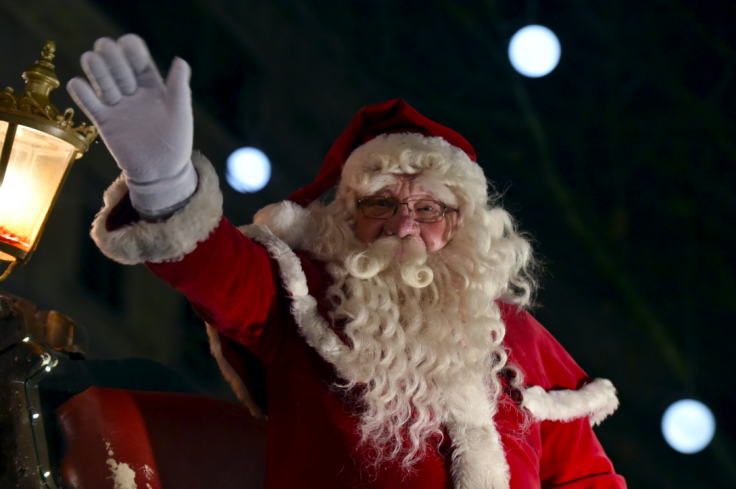Santa Claus’ Possible Pagan Origins: 5 Influences Behind Father Christmas

Santa Claus is beloved by Christian children all over the world for his jolly laugh-- and of course because he brings presents to well-behaved boys and girls on Christmas Eve-- but did you know there are possible pagan influences behind the mythical man? Pagan references have helped create the white-bearded figure pop-culture knows and love. Check them out below:
St. Nicholas: St. Nicholas was celebrated on Dec. 6. On this day, people would give gifts in his honor. St. Nicholas lost popularity during the Protestant Reformation, and the gift giving was then in the name of baby Jesus. Since a baby can’t carry that many presents, baby Jesus was given a sidekick, National Geographic reported. The helpers were reportedly based off St. Nicholas and given Germanic names: Aschenklas (Ashy Nicholas), Ru-klaus (Rough Nicholas) and Pelznickel (Furry Nicholas).
Odin: Odin, the ruler of Asgard, is one of the most important gods in Norse and Germanic mythology. He had a white beard and mythical powers, just like the present day Santa Claus. Odin arguably has the closest ties to Santa. Odin would lead a hunting party during the Winter Solstice, or Yule. His horse, Sleipnir, would lead the way. If children left out carrots in their boots near the chimney for the horse, they would be rewarded with gifts, according to About.com. This soon became a Christian custom.
La Befana: La Befana is an Italian woman who leaves children presents on Jan. 6. Legend has it that the Three Wise Men asked her for directions on their way to see baby Jesus, but she refused because she was too busy with housework. She later had a change of heart and went after them with a bag of gifts, but she never caught up with the wise men and never found the manger. She still travels the world on a broomstick looking for the infant. Along the way, she leaves good children sweets and naughty children lumps of coal or bags of ashes. Unlike Santa, she is depicted as being covered in soot and flying on a broomstick.
Frau Holda: Frau Holda is the Teutonic goddess of winter. While her looks have nothing to do with Santa-- she's a beautiful blonde-- she does have many things in common with him. Hola, who is also known as Mother Night, dressed in red and used chimneys to deliver gifts. Sometimes, food and milk would be left for her Dec. 24.
Clement Clarke Moore’s Poem: “The Night Before Christmas,” which was first known as, “A Visit From St. Nicholas,” tells the version of Santa Claus that is popular today. He wrote the poem for his family in 1822 and never intended it to be published. However, a family friend heard about the poem from the children and submitted it to the newspaper. It contains iconic lines that describe Santa like, “He had a broad face and a little round belly that shook when he laughed like a bowlful of jelly,” and “He was chubby and plump, and a right jolly old elf.” Of course, it finished with, “Happy Christmas to all, and to all a good night.”
Follow me on Twitter @mariamzzarella
© Copyright IBTimes 2024. All rights reserved.






















